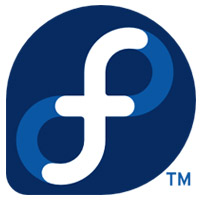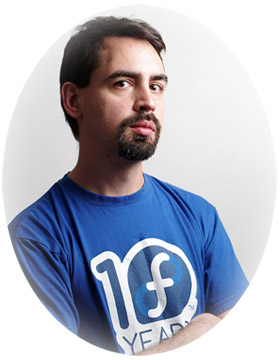
Fedora is perhaps one of the hallmark Linux distributions. It is sponsored by Red Hat, the commercial developer of Red Hat Enterprise Linux. Red Hat’s investment in the Fedora community is collaborative. Fedora Linux releases often provide RHEL developers with a field test environment that incubates innovative open source software technologies.

Red Hat Linux 1.0 was released in late 1994 as Red Hat Commercial Linux. It was the first Linux distribution to use the RPM Package Manager as its packaging format. The distribution spawned several other distributions, such as CentOS, Mandriva Linux and Yellow Dog Linux. Red Hat discontinued the Red Hat Linux distro in 2004, replacing it with Red Hat Enterprise Linux to meet the targeted needs of enterprise environments.
The Fedora community continues to develop its own Fedora distro as a noncommercial (free) version for consumers who elect not to pay for enterprise support. However, users will discover that the upcoming Alpha release of Fedora 21 may well be a radically different distribution that’s more than a desktop OS.
In this interview, Matthew Miller, the Fedora Project’s new leader, discusses with LinuxInsider the pressing issues impacting the growth of Fedora Linux and how it is steering the progress of the FOSS (free and open source software) movement.
LinuxInsider: How do you see progress and adoption of the Fedora distro?
Matthew Miller:
We are at a point where we have had 10 years of good success. We had a really big burst of popularity a while ago. Since then, it has been coasting. So a lot of what we are trying to address in Fedora and working on now is designed to change that. We are projecting a growth curve as a result instead of a flat status among users.
LI: Is this coasting period a reflection on Linux usage in general?
Miller:
I do not think it is Fedora per se that has a problem. I think it is the Linux distributions as a concept and an operating system are not fulfilling expectations as well as they were a decade ago. We are trying to address that at Fedora.
LI: What new features are you planning to help make Linux more fulfilling?
Miller:
We are in the midst of our Fedora 21 cycle. The Alpha release should be coming out very soon now. One of the major things we are doing in response to the waning popularity is release three separate Fedora deliverables for this release. We are planning three separate products, if you will, although we are not going to be selling them. We are splitting Fedora into Fedora Server, Fedora Cloud and Fedora Workstation. Each of those is intended to have a target focus.
LI: Is the Fedora community reinventing its brand?
Miller:
If you look at Fedora over the past decade, you see sort of a decision to make it one-size-fits-all. But we are now looking at Fedora and asking, ‘what is Fedora?’ and ‘what can we make better?’ When you look at Fedora now, you can see that there was a decision to make it a desktop-only distro — so that was the focus for a while.
LI: Is this a radical change for Fedora?
Miller:
When you look at Fedora’s history separate from Red Hat Enterprise Linux, it had a very historic user base of sysadmins. That user base has been important to Fedora and has always been there. That includes sysadmins running Fedora as a desktop and sysadmins running Fedora for a lot of things in production that are not desktop-related.
LI: So why make a change?
Miller:
Over the last few years, the focus has changed. There has been a growing tension in the community. So we made the decision to address those other uses for Fedora. We thought it would be better to diffuse those tensions by making separate versions.
LI: Why has the Fedora community not shown much interest in a server release until now?
Miller:
One of the reasons there never was a Fedora server is that at one of the very early Fedora conferences in Boston, we had a session to define what a Fedora server would be. I saw a lot of disparity. There were 30 different people in the room discussing 30 different server things. So we made the decision that there would not be a Fedora server.
LI: What will the first Fedora Server release encompass?
Miller:
The server distribution is focused on the idea of server role and easy deployment. We will have a policy under it to guide its development.
LI: How different will the workstation edition be from the existing Fedora desktop distro?
Miller:
For the workstation version, we are packaging a desktop distro that has all the previous features and desktop choices. We are not taking those away. But we really want to really focus on packaging up a desktop distribution that targets a specific niche that will be really successful. The idea is to make Fedora into the best office distro. We have some people working on exactly what that means. I do not want to get people too excited about changes. It will not be too radically different — but it will have that new focus. It will be really appealing to office workers. The goal is to have Fedora spread out rather than fade into abomination.
LI: What is your strategy for dealing with the cloud?
Miller:
Our cloud focus is on the best operating system and on people who are doing scale-out computing. We are working on defining those needs and how to address them. As part of that, our primary focus is on Fedora Atomic. There will be several innovative things added. One thing will be a special screen that lets you post updates to your system. That is a big departure from the norm, because it has an entire OS composed as a single thing. We will work with special builds around Docker, for instance. The intent is to build that up in the best possible way to run Docker. The goal is to come with Docker ready to go out of the box. So we will have an initial Docker container included. The intent is to build that up into the best possible way to run Docker.
LI: It sounds as if Fedora is sharpening a new cutting-edge cloud server system. Is that the intent?
Miller:
That is one of the reasons for separating Fedora Cloud from the Fedora distro. … Trying to develop a friendly desktop and a server system all in the same place will create a lot of friction. Making decisions for things that are best for Atomic are not what you want to see in a desktop distro. So trying to make a one-size-fits-all solution was not going to work for that. Keeping things separate will make it exciting and useful.
LI: What are the stumbling blocks?
Miller:
We do have 10 years of history and a lot of success as a really great operating system. We want to make sure that in making something new we do not break those things. It is a balance between stepping carefully and moving ahead with innovations. That is a challenge. I think also there is a challenge that Fedora is just a desktop operating system. That is something I am hopeful that we can do something about.
LI: How much of a change is your view for the direction of Fedora?
Miller:
Another goal is to make Fedora one of the best desktop operating systems — but we want to avoid forum discussions where someone asks about using Fedora as a server and getting an answer that says,”oh no — why would you want to ever do that?” There are specific areas where Fedora can really shine. Fedora can fit in really well into the OS ecosystem. Fedora can be an important part of that.
LI: Where do you see the Linux operating system in general heading?
Miller:
This is really an exciting time for the Linux operating systems. In the future, everything is going to be built on Linux. Much of it is already. It is a challenge for Linux, because Linux has already been so successful. There is a lot of innovation in that area going on. But it is a change. I think Linux distributions are used to being the star of the show. We have to make sure that just because the desktop is not the star of the show any more, it does not mean that we should not be getting the most out of it.





















































